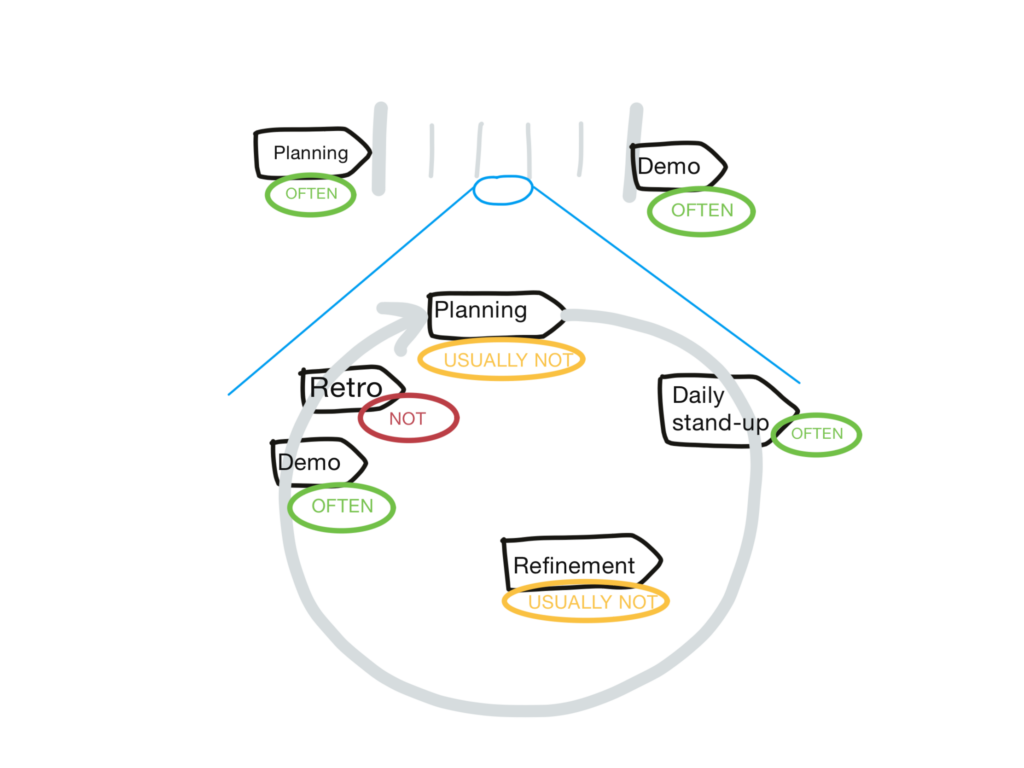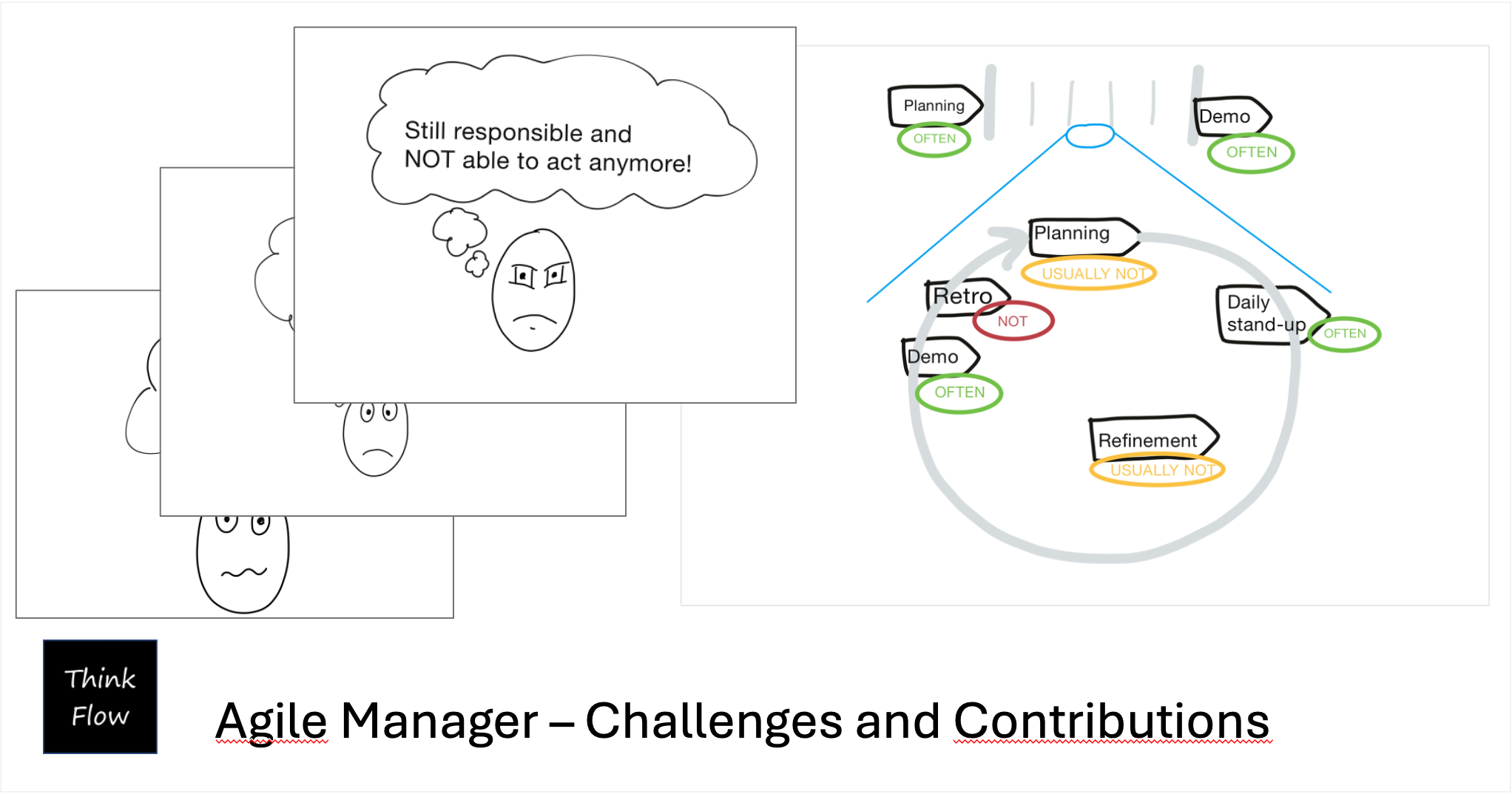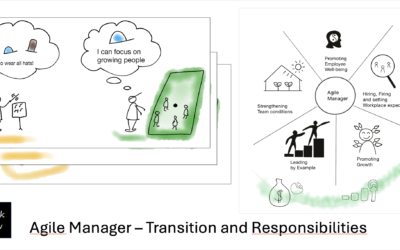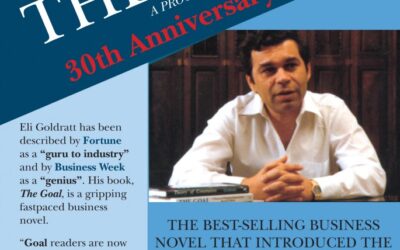Have you observed challenges for the line manager moving into an agile context? Is it somewhat unclear to you how the manager can truly contribute and be valuable in this new context?
If answer is yes, you are not alone since we have met this perception in many organizations. We have also seen powerful ways to adress these questions and in our articles on Agile Manager we share them to help you on this journey, regardless if you are a manager yourself or have a role interfacing to managers.
In the previous article, we explored how the role of the line manager will change as the organisation adopts agile principles and ways of working.
In this article we will look at the common challenges many managers might experience in their journey. For those of you looking for hands-on guidance on how to act, we will share successful patterns we have observed for the managers contribution to the various events for the team and team of teams.
Common challenges
As managers navigate through the transformation process within an organization, they encounter a spectrum of challenges. Individual experiences may vary, but the following areas are frequently identified as sources of difficulty for managers in their transitions.

- There will be changes in communication patterns, as other roles become more naturally contacted on delivery-related matters. There may be a sense of no longer being the central point of contact that many turn to.
- Responsibilities related to the delivery process and delivery content shifting more to other roles, which can be challenging if these are areas you are passionate about.
- Experiencing a reduced insight into certain aspects of the work as delivery is more thoroughly handled by other roles.

- Having a feeling that responsibility exceeds the ability to influence and control in practice. This imbalance between accountability/responsibilty and ability to influence seem to create a lot of anxiety and energy lost in many organizations we have met.

- Uncertainty about how the manager will contribute when the role changes, which can lead to a sense of identity crisis.

- As a manager and leader, you are expected to embrace and understand agile values so that you can guide and be a role model for the new, which can be perceived as challenging.
- Adjustment of leadership style, as personality traits that may have led to success in one’s career may need to take a back seat to others.

All these are examples of different challenges and mixed feelings for a manager when the organization adopts to agile principles and way of working. These feelings may make it difficult to find a way forward in the transition. Next we describe and examplify how to be active, physically present to observe and support in the workspace.
How and where to be visible and contribute
To efficiently act as Manager in an agile context, you need to participate consciously in the regular events for the agile teams. Those events are for the team and performed by the team, meaning that as manager you have no obvious responsibility in these events. How can you as manager contribute to these events and strengthen the team conditions without reducing ownership and autonomy in the team? That is the question explored in this section.
to strengthen the team conditions without reducing ownership and autonomy in the team
When attending events for an agile team, or team of teams, your mission is to listen rather than to advise or interfere. Make sure you are mentally present, paying full attention to what is happening and keeping distractions at a minimum.
In these events, some general questions to ask yourself as manager are:
- How would this event work if it was working really well?
- What is not happening here today?
- How can I make it happen without becoming a bottleneck?
- What discrepancies can I observe between body language and what is being said? What is causing that?
Below you find guidance on what to look for in each event, your purpose for attending and how you can contribute specifically to that event.

Daily standups
Daily standups are for the team to organize their work and make sure they do their best as a team to meet commitments and goals.
gives you unique insights into the reality the team faces
We would recommend that you attend these often, at least once a week. The purpose of your attendance is to be visible and accessible to make it easier for the team to reach out for assistance. Attending also gives you unique insights into the reality the team faces.
Observe and continuously reflect on aspects like:
- What is the atmosphere like?
- To what extent are team members providing useful feedback to each other?
- How do they deal with unrealistic expectations and additional work flowing into the team?
- What kind of impediments are hard for the team to remove?
- To what extent is the team autonomous and not relying on approval or input from someone else?
- In which areas is self-organization not efficiently used by the team? Which individuals often find themselves stuck with tasks?
- What is their ability to deal with conflicts?
Ways for you to contribute:
- Listen, listen, listen.
- Make sure you understand what help the team would like to have from you – and what help they don’t need.
- For behavior and actions not happening consider how you can make it happen through the team and SM without becoming a bottleneck yourself.
- Assist in removing impediments as needed.
Demos
Attend these as often as possible. You are there to show interest, signal the importance of this event, to better understand what the team delivers and to offer support and feedback. When the teams are part of a larger team of teams, demos on that next level may be more valuable than team demos, so you can adjust your attendance accordingly.
Observe and continuously reflect on aspects like:
- What capabilities have the team just added to the service or product?
- What value to the organization has the team created?
- To what extent is the product meeting the needs as you understand them?
Ways for you to contribute:
- Show genuine appreciation for the team results and achievements.
- Help the team to realize what benefits their work brings to the consumers of the work, regardless of if it is consumed internally or externally.
- Offer feedback
- Help team identify areas where they could improve
Planning sessions
In general, you will not have to attend the planning sessions for the team, unless the team asks for your contribution. In a scaled setup of multiple teams jointly planning in a large session, sometimes referred to as “Big room planning”, those sessions are, however, a valuable opportunity for you to gain insights into how cross-team collaboration works and how the team of teams can create a joint plan.
Observe and continuously reflect on aspects like:
- How and when is collaboration between teams happening to jointly plan?
- What is the willingness to help other teams in order to create the best possible joint plan for the entire team of teams?
- When and how are dependencies between teams discussed?
- How are risks dealt with?
Contribute:
- offer your support in removing impediments when needed.
- Express appreciation for engagement invested and try to be specific when doing so.
Backlog refinement sessions
In these regular events, the team discusses and refines their backlog items as preparation for an upcoming planning session.
As manager, you will not have to attend these events unless there is a clear reason, like the team asking for support.
Retrospectives
Being a manager, our recommendation is that you shouldn’t participate in the retrospective sessions in which the team reflects on how to improve their way of working, the product, environments and tools. The reason being that these sessions need to be a safe space for team members to openly express their thoughts and feelings without fear of reprisal or judgement. Having a manager present may inhibit team members from being completely open and honest, which can hinder the effectiveness of the retrospective.
you shouldn’t participate in the retrospective sessions
Final words
You as a manager need to find your foothold in the transition depending on your context. This article outlines the transition and the role in generic terms, and you need to explore your individual and unique journey. A powerful approach is to join forces with other managers within your organization to network, exchange perspectives and support each other. We at Think Flow can also support in workshops or discussions, don’t hesitate to get in contact if you like.
To be sure you dont miss any of our coming articles or news updates you can sign up for our newsletter that we will send out once per quarter. Follow the link below and go to the bottom of that page and register your email.
https://thinkflow.se/
Authors

Mikael Broomé

Martin Teljeby








0 Comments